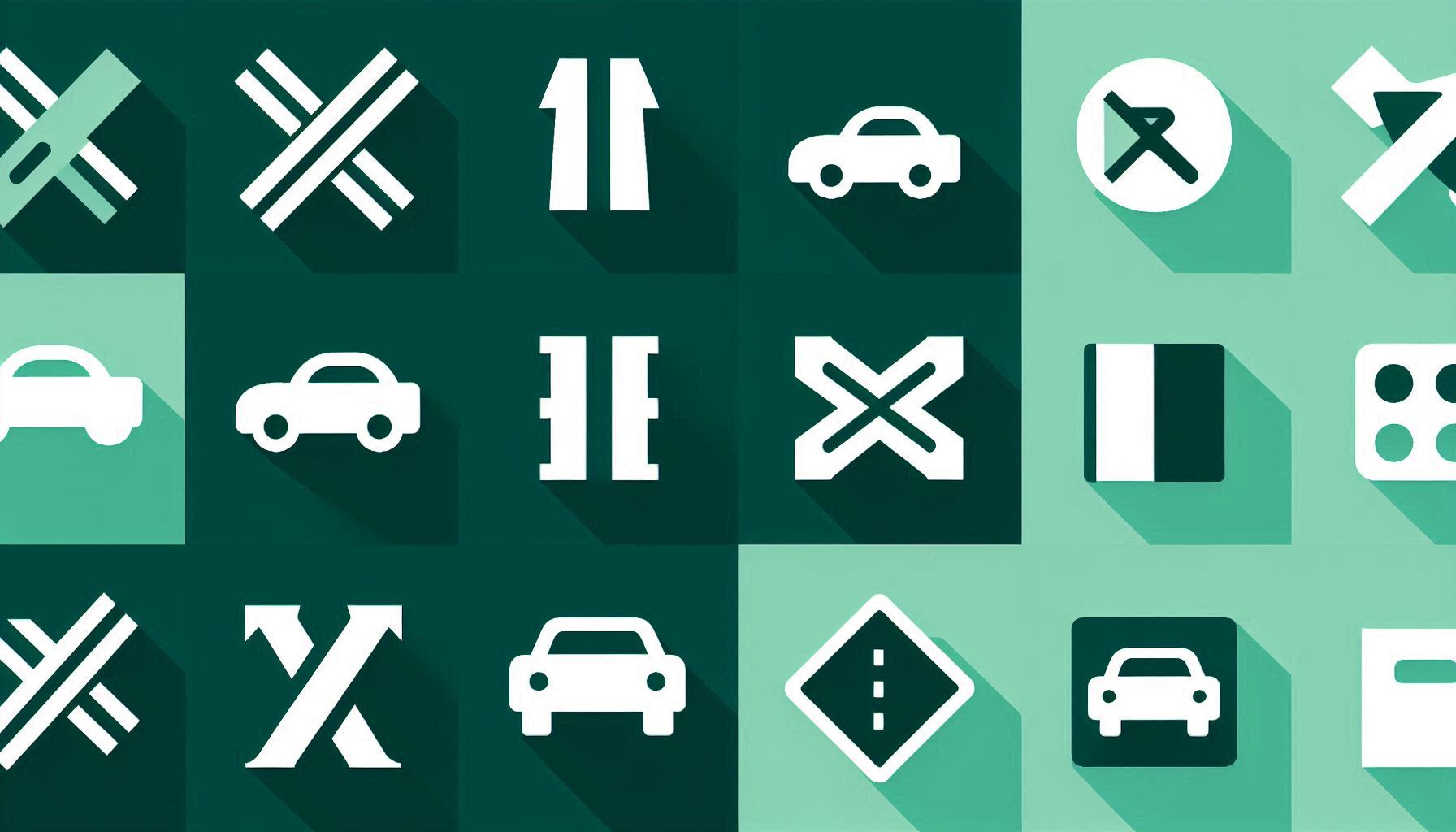Effect of Mobile Phone Position on the Visual and Driving Behaviour – A Lane Change Test-Based Study
Versions
- 11.06.2025 (2)
- 05.06.2025 (1)

Downloads
This study aims to investigate the effect of the position of mobile phones used for navigation purposes on the driving performance and visual behaviour of drivers. With the advancement of technology in recent times, drivers use mobile phone applications for navigation. Previous studies showed that drivers place their in-vehicle mobile phones at various locations. This behaviour could severely affect their driving performance and visual behaviour. Thirty drivers performed visual-manual tasks on mobile phones located at different positions (left, right, front and middle of the steering wheel) around the dashboard while driving in a simulated driving environment. The lane change test (LCT) assessed the driving behaviour, and the eye-tracker measured the visual behaviour. The outcome of LCT revealed that the best driving performance was achieved for mobile phones at the front of the steering wheel. The subjective workload rating score was the highest, and driving performance was worst for the middle mobile phone position. The findings of this study show that the in-vehicle mobile phone position has a significant effect on the driving performance and visual behaviour of the drivers. Insights drawn could be useful in drafting standard operating procedures for professional drivers and others in general.
Downloads
WHO. Global status report on road safety. 2018 p. 424.
Ahlström C, et al. Using smartphone logging to gain insight about phone use in traffic. Cognition, Technology & Work. 2019;22(1):181–191. DOI: 10.1007/s10111-019-00547-6.
Ericsson. Ericsson Mobility Report (November 2018). Report number: November, 2018 p. 32.
Horrey WJ, Wickens CD, Consalus KP. Modeling drivers’ visual attention allocation while interacting with in-vehicle technologies. Journal of Experimental Psychology: Applied. 2006;12(2):67. DOI: 10.1037/1076-898X.12.2.67.
Esfahani HN, et al. Prevalence of cell phone use while driving and its impact on driving performance, focusing on near-crash risk: A survey study in Tehran. Journal of Transportation Safety & Security. 2019;1–21. DOI: 10.1080/19439962.2019.1701166.
Verma IK, Karmakar S. Positioning of the mobile phone to minimize driver’s biomechanical effort during navigation: DHM-based approach. Journal of The Institution of Engineers (India): Series C. 2020;101(5):867–880. DOI: 10.1007/s40032-020-00580-9.
ISO 26022. Road vehicles — Ergonomic aspects of transport information and control systems — Simulated lane change test to assess in-vehicle secondary task demand. Report number: 26022:2010, 2010.
Ranney TA, et al. NHTSA driver distraction research: Past, present and future. In: 17th International Technical Conference on the Enhanced Safety of Vehicles. 2001.
De Lumen AB, et al. Driver distraction: Determining the ideal location of a navigation device for transportation network vehicle services (TNVS) drivers in Metro Manila. In: Stanton NA (ed.) Advances in Human Aspects of Transportation. Springer International Publishing; 2019. p. 554–563.
Doi T, et al. Camera monitor systems as replacement of side mirror in rearward monitoring. In: Stanton NA (ed.) Advances in Human Aspects of Transportation. Springer International Publishing; 2019. p. 544–553.
Ganesh D, et al. In-vehicle visual hindrance free positioning of instrument cluster. SAE Technical Paper 2015-01-2838. 2015.
Radakrishnan R, et al. Positioning of the infotainment screen inside vehicle for better visual experience. In: SAE Technical Paper 2016-01-1416. 2016.
Wittmann M, et al. Effects of display position of a visual in-vehicle task on simulated driving. Applied Ergonomics. 2006;37(2):187–199. DOI: 10.1016/j.apergo.2005.06.002 .
Zheng R, et al. Eye-gaze tracking analysis of driver behavior while interacting with navigation systems in an urban area. IEEE Transactions on Human-Machine Systems. 2016;46(4):546–556. DOI: 10.1109/THMS.2015.2504083.
Shelton B, et al. Gauging the utility of ambient displays by measuring cognitive load. Cognition, Technology & Work. 2020;23(3):459–480. DOI: 10.1007/s10111-020-00639-8.
McGehee DV. The building blocks of driver distraction policy. Ergonomics in Design. 2011;19(4):25–27. DOI: 10.1177/1064804611419964.
LTO. Republic act 10913 or the anti-distracted driving act. 2017.
Hampton P, Langham M. A contextual study of police car telematics: The future of in-car information systems. Ergonomics. 2005;48(2):109–118. DOI:10.1080/00140130412331290844.
McKinnon CD, Callaghan JP, Dickerson CR. Evaluation of the influence of mobile data terminal location on physical exposures during simulated police patrol activities. Applied Ergonomics. 2012;43(5):859–867. DOI: 10.1016/j.apergo.2011.12.009.
Beck D, Lee M, Park W. A comparative evaluation of in-vehicle side view displays layouts in critical lane changing situation. Ergonomics. 2017;60(12):1682–1691. DOI: 10.1080/00140139.2017.1343958.
Large DR, et al. Driving without wings: The effect of different digital mirror locations on the visual behaviour, performance and opinions of drivers. Applied Ergonomics. 2016;55:138–148. DOI: 10.1016/j.apergo.2016.02.003.
World Medical Association. World medical association declaration of Helsinki: ethical principles for medical research involving human subjects. JAMA. 2013;310(20):2191–2194. DOI: 10.1001/jama.2013.281053.
Papakostopoulos V, Nathanael D, Psarakis L. Semantic content of motorcycle riders’ eye fixations during lane-splitting. Cognition, Technology & Work. 2019;22(2):343–355. DOI: 10.1007/s10111-019-00572-5.
Bridger R. Introduction to human factors and ergonomics. CRC Press; 2017.
Snellen H. Probebuchstaben zur bestimmung der sehschärfe. Verlag von Hermann Peters; 1868.
Ishihara S. Tests for color-blindness. Handaya, Tokyo, Hongo Harukicho; 1917.
Burns PC, et al. Measuring distraction: Task duration and the lane-change test (LCT). Proceedings of the Human Factors and Ergonomics Society Annual Meeting. 2005;49(22):1980–1983. DOI: 10.1177/154193120504902220.
Harbluk JL, et al. Using the lane-change test (LCT) to assess distraction: Tests of visual-manual and speech-based operation of navigation system interfaces. In: Proceedings of the 4th International Driving Symposium on Human Factors in Driver Assessment, Training, and Vehicle. Iowa City, Iowa: University of Iowa; 2007. p. 16–22. DOI: 10.17077/drivingassessment.1208.
Petzoldt T, Bär N, Krems J. Gender effects on lane change test (LCT) performance. Proceedings of the Fifth International Driving Symposium on Human Factors in Driver Assessment, Training and Vehicle Design. 2009;64:90–96.
Rodrick D, Bhise V, Jothi V. Effects of driver and secondary task characteristics on lane change test performance. Human Factors and Ergonomics in Manufacturing. 2013;23(6):560–572. DOI: 10.1002/hfm.20342.
Crundall E, Large DR, Burnett G. A driving simulator study to explore the effects of text size on the visual demand of in-vehicle displays. Displays. 2016;43:23–29. DOI: 10.1016/j.displa.2016.05.003.
Yang Z, et al. Effect of warning graphics location on driving performance: An eye movement study. International Journal of Human–Computer Interaction. 2020;36(12):1150–1160. DOI: 10.1080/10447318.2020.1722401.
Scialfa CT, McPhee L, Ho G. The effects of a simulated cellular phone conversation on search for traffic signs in an elderly sample. In: Proceedings of the symposium on Eye tracking research & applications - ETRA ’00. New York, New York, USA: ACM Press; 2000. p. 45–50. DOI: 10.1145/355017.355024.
Feng F, Liu Y, Chen Y. Effects of quantity and size of buttons of in-vehicle touch screen on drivers’ eye glance behavior. International Journal of Human-Computer Interaction. 2018;34(12):1105–1118. DOI: 10.1080/10447318.2017.1415688.
Solís-Marcos I, Kircher K. Event-related potentials as indices of mental workload while using an in-vehicle information system. Cognition, Technology & Work. 2019;21(1):55–67. DOI: 10.1007/s10111-018-0485-z.
Pauzié A. A method to assess the driver mental workload: The driving activity load index (DALI). IET Intelligent Transport Systems. 2008;2(4):315. DOI: 10.1049/iet-its:20080023.
Razali NM, Wah YB, others. Power comparisons of Shapiro-Wilk, Kolmogorov-Smirnov, Lilliefors and Anderson-Darling tests. Journal of statistical modeling and analytics. 2011;2(1):21–33.
Shapiro SS, Wilk MB. An analysis of variance test for normality (complete samples). Biometrika. 1965;52(3/4):591–611. DOI: 10.2307/2333709.
Hughes GM, Rudin-Brown CM, Young KL. A simulator study of the effects of singing on driving performance. Accident Analysis and Prevention. 2013;50:787–792. DOI: 10.1016/j.aap.2012.07.001.
Cohen J. Statistical power analysis for the behavioral sciences. Academic press; 2013.
Mattes S. The lane change task as a tool for driver distraction evaluation. Quality of work and products in enterprises of the future. 2003;1–30.
Young KL, Lenné MG, Williamson AR. Sensitivity of the lane change test as a measure of in-vehicle system demand. Applied Ergonomics. 2011;42(4):611–618. DOI: 10.1016/j.apergo.2010.06.020.
Summala H, Lamble D, Laakso M. Driving experience and perception of the lead car’s braking when looking at in-car targets. Accident Analysis & Prevention. 1998;30(4):401–407. DOI: 10.1016/S0001-4575(98)00005-0.
Dukic T, et al. Effect of button location on driver’s visual behaviour and safety perception. Ergonomics. 2005;48(4):399–410. DOI: 10.1080/00140130400029092.
Čegovnik T, et al. An analysis of the suitability of a low-cost eye tracker for assessing the cognitive load of drivers. Applied Ergonomics. 2018;68:1–11. DOI: 10.1016/j.apergo.2017.10.011.
Kim KH, Wohn KY. Effects on productivity and safety of map and augmented reality navigation paradigms. IEICE Transactions on Information and Systems. 2011;E94-D(5):1051–1061. DOI: 10.1587/transinf.E94.D.1051.
Copyright (c) 2025 Indresh Kumar VERMA, Bighna Kalyan NAYAK, Sougata KARMAKAR

This work is licensed under a Creative Commons Attribution-NonCommercial 4.0 International License.



















